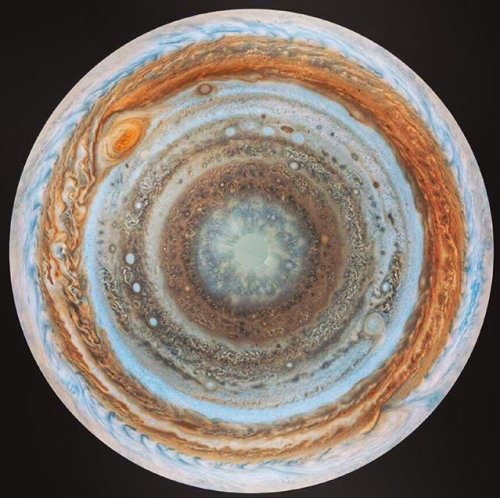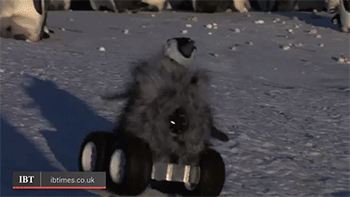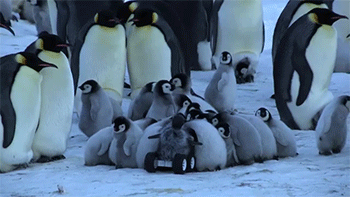Whales Are The Evolutionary Equivalent Of Pulling A U-turn On The Freeway
whales are the evolutionary equivalent of pulling a u-turn on the freeway
More Posts from Science-is-magical and Others


Photographs taken of Saturn by NASA. Yes, these are real pictures; they are not illustrations.
(Source)
A guy asks an engineer “hey what 2 + 2?”
Engineer responds “4. No wait make 5 just to be on the safe side.”

Missed any of the graphics featured in C&EN? They’ve now put a page together so you can find all of the graphics in one place, on subjects including Guinness, daffodils, barbecue & more: ow.ly/RB10e

‘Smart fat cells’ cross blood-brain barrier to catch early brain tumors
An MRI contrast agent that can pass through the blood-brain barrier will allow doctors to detect deadly brain tumors called gliomas earlier, say Penn State College of Medicine researchers. This ability opens the door to make this fatal cancer treatable.
Gliomas are brain tumors that arise from glial cells, which help nerve cells to stay connected and send signals throughout the body.
Cancerous gliomas are uniformly fatal, with a median survival rate of 14 months from the time of diagnosis. But a new nanotechnology approach developed by Xiaoli Liu and Madhan Kumar in the Department of Neurosurgery could transform gliomas from a death sentence into a treatable condition.
Patients diagnosed with a malignant glioma can undergo surgery, chemotherapy and radiation to destroy the tumor, but the cancer will return.
“Patients typically don’t die from the tumor they initially presented with. Rather, they die from new tumors that come back in other parts of the brain,” said James Connor, Distinguished Professor of Neurosurgery.
These new gliomas tend to grow quickly and are often resistant to treatment because they spring from cancer cells that survived the first therapeutic assault. Glioma patients have follow-up MRIs to detect new brain cancers but the tests do not catch the tumors early enough to save lives.
That is because contrast agents used to outline gliomas on an MRI can only pass the protective blood-brain barrier once the tumors have grown large enough to cause damage to the barrier. Until then, the blood-brain barrier blocks 98 percent of small molecules and all large molecules from entering the brain.
To overcome this deadly limitation, Penn State researchers created “smart fat cells” called liposomes that can pass the blood-brain barrier in mice, seek out tiny cancerous gliomas like heat-seeking missiles and light them up on an MRI. The liposomes are loaded with the most commonly used contrast agent, Magnevist. On their surface, the liposomes are studded with proteins that target receptors on glioma cells.
The new contrast agent delivery system is more sensitive than traditional contrast-enhanced MRI, Connor said.
The researchers found that the liposomes entered the brain in healthy mice with uncompromised blood-brain barriers. Both the conventional and the new technique found large gliomas in mice with cancer, but only the liposome-encapsulated agent was able to detect smaller early-stage tumors. “The goal is to be able to get down to detecting single cancer cells,” Connor said.
The study was published in Journal of Neuro-Oncology.
It is not exactly known how the liposomes get past the intact blood-brain barrier, but they apparently do it without causing damage. In the study, mice showed no harm from the treatment.
This novel approach is an alternative to ultrasound, another promising method researchers are studying to get therapeutic agents into the brain. Ultrasound, however, causes temporary disruption to the blood-brain barrier, which allows not only the therapeutic agent to enter the brain, but also blood which could have medical implications.
“Ultrasound, with all of its good qualities, is disruptive to the blood-brain barrier, whereas we can get an agent to cross it without causing disruption.” Connor said.
The researchers said that in the future, smart fat cells will deliver chemotherapeutic drugs, along with contrast agents, to brain tumor patients so that cancer cells can be detected and wiped out in one step. They recently presented research on these next-generation liposomes at the Society for Neuro-Oncology meeting in San Antonio.

How the Geneva Drive (the mechanical step that makes the second hand on a clock work by turning constant rotation into intermittent motion) works.
-
 smorter liked this · 4 months ago
smorter liked this · 4 months ago -
 keylimespine reblogged this · 4 months ago
keylimespine reblogged this · 4 months ago -
 garvet liked this · 8 months ago
garvet liked this · 8 months ago -
 pleasantfishhandswobbler reblogged this · 8 months ago
pleasantfishhandswobbler reblogged this · 8 months ago -
 yenoodlethings reblogged this · 1 year ago
yenoodlethings reblogged this · 1 year ago -
 daughter-of-poseidon-ownedbynone reblogged this · 1 year ago
daughter-of-poseidon-ownedbynone reblogged this · 1 year ago -
 acid-fuchsine liked this · 1 year ago
acid-fuchsine liked this · 1 year ago -
 hawpocasworl liked this · 1 year ago
hawpocasworl liked this · 1 year ago -
 iwillhaveamoonbase liked this · 2 years ago
iwillhaveamoonbase liked this · 2 years ago -
 celestriakle liked this · 2 years ago
celestriakle liked this · 2 years ago -
 the-ant-in-amber liked this · 2 years ago
the-ant-in-amber liked this · 2 years ago -
 xmotherofbatsx liked this · 2 years ago
xmotherofbatsx liked this · 2 years ago -
 inspo-yay reblogged this · 2 years ago
inspo-yay reblogged this · 2 years ago -
 pikapaw773 liked this · 2 years ago
pikapaw773 liked this · 2 years ago -
 something-broken-failing-rotting reblogged this · 2 years ago
something-broken-failing-rotting reblogged this · 2 years ago -
 something-broken-failing-rotting liked this · 2 years ago
something-broken-failing-rotting liked this · 2 years ago -
 fangirl4lifetime liked this · 2 years ago
fangirl4lifetime liked this · 2 years ago -
 lunar-resonance liked this · 2 years ago
lunar-resonance liked this · 2 years ago -
 arialis reblogged this · 2 years ago
arialis reblogged this · 2 years ago -
 annasivy liked this · 2 years ago
annasivy liked this · 2 years ago -
 graygatsby reblogged this · 3 years ago
graygatsby reblogged this · 3 years ago -
 bibliophilea liked this · 3 years ago
bibliophilea liked this · 3 years ago -
 tumblurcoffeetablebook reblogged this · 3 years ago
tumblurcoffeetablebook reblogged this · 3 years ago -
 deepestparadisejellyfish liked this · 3 years ago
deepestparadisejellyfish liked this · 3 years ago -
 moon-possum liked this · 3 years ago
moon-possum liked this · 3 years ago -
 acleverforgery liked this · 3 years ago
acleverforgery liked this · 3 years ago -
 kaifyer reblogged this · 3 years ago
kaifyer reblogged this · 3 years ago -
 madolche-mewfeuille1 liked this · 3 years ago
madolche-mewfeuille1 liked this · 3 years ago -
 houfukuseisaku reblogged this · 3 years ago
houfukuseisaku reblogged this · 3 years ago -
 coolsadtrash reblogged this · 3 years ago
coolsadtrash reblogged this · 3 years ago -
 bananagoose liked this · 3 years ago
bananagoose liked this · 3 years ago -
 offthevanderwaal reblogged this · 3 years ago
offthevanderwaal reblogged this · 3 years ago -
 foolap liked this · 3 years ago
foolap liked this · 3 years ago -
 drowningpenguin liked this · 3 years ago
drowningpenguin liked this · 3 years ago








